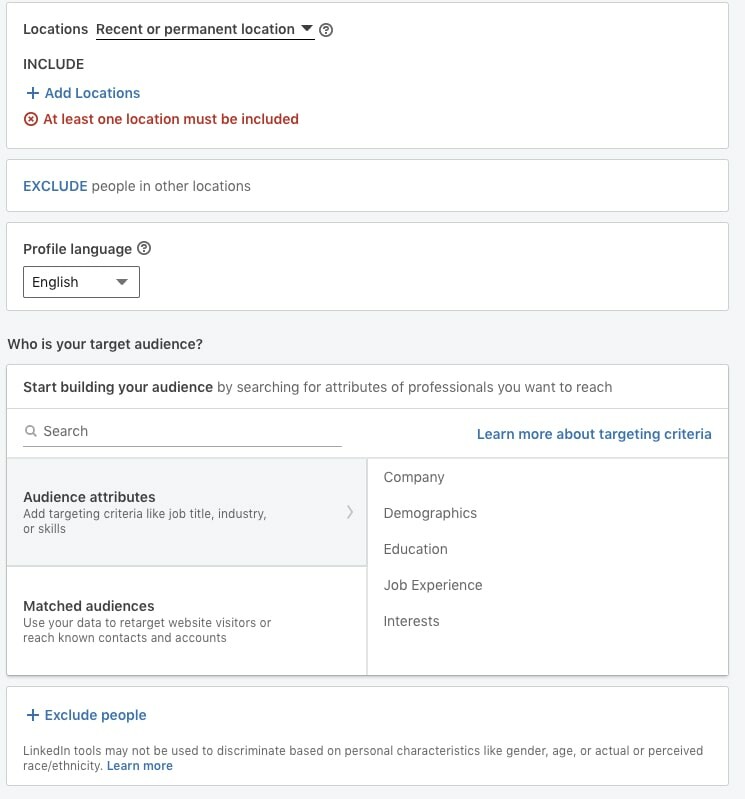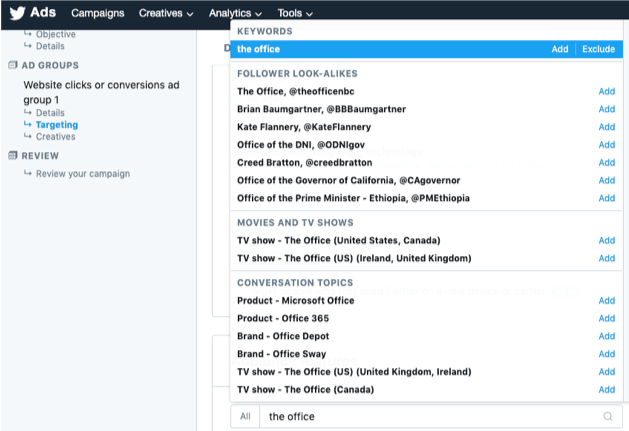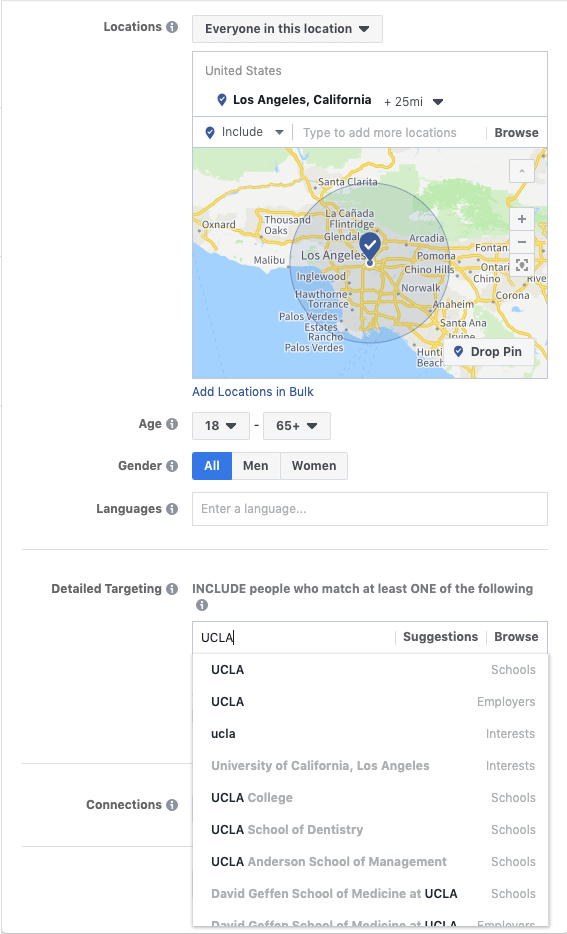In this social media targeting article, we will be diving into the mechanics behind three of the most popular social media platforms used for digital marketing: LinkedIn, Twitter, and of course Facebook. All three social media platforms have granular and cool (while sometimes creepy) targeting capabilities, but these options do differ between platforms. As Dwight Schrute would say, “Question: Which platform would best benefit my business?” Answer: It depends. Unfortunately, the answer is not a simple “yes” or “no”. These targeting differences lead to different platforms being best utilized for various social media audiences/target consumers, products, goals, etc. But how do you discover which means of social media marketing is best for YOU?
The end all, be all for all professional social media uses and networking. Naturally, LinkedIn’s targeting capabilities and social media ad formats are more professionally focused. For example, you can create ads for professionals whose company industry falls under “Financial Services”. Want to narrow it down even further? You can ensure that these particular professionals/potential customers work in the Financial Services industry, while simultaneously holding the title of manager or higher, and who belong to a company that has anywhere from 501 to 1,000 employees. This is truly just the tip of the iceberg of how granular your target audience can become using tools available through social media advertising. You can mix and match location, language, company size, job seniorities, company industries, education, and a whole host of other business-driven information and qualifications to build your ideal target audience.

Further, LinkedIn allows marketers the option to deploy both “and” and “or” interest-based targeting. This means that while you can narrow down your audience to include LinkedIn users who have a master’s degree and are interested in sales and retail, you can also target users who have a master’s degree or are interested in sales and retail, or politics and law, or any other targeting criteria that you can be utilized on LinkedIn’s advertising platform. On the other hand, while building your ideal audience, there is most likely a group of users who you do not want to serve ads to. Problem solved! Advertisers involved with digital marketing can exclude people based on the same demographics and criteria that are utilized while building your target audience.
Up next, Twitter!
Out of all three social media marketing platforms covered here, Twitter has arguably the most specific and the most restrictive targeting. With respect to Twitter being specific, Twitter allows you to target users based on assets specific to their platform such as hashtags and follower lookalikes. Referring back to my Dwight Schrute quote earlier (and when is “The Office” not relevant), you can utilize lookalike followers by choosing to target users who are similar to those who follow @TheOfficeNBC. You can also target “The Office” as a hashtag, conversation topic, or TV show interest that is relevant to your brand. In regard to Twitter being restrictive, there is no cut and clear way to distinguish between and/or targeting as is easily done on LinkedIn. However, similar to LinkedIn, you can exclude certain behaviors or users. Additionally, Twitter gives less freedom for certain targeting criteria when compared to advertising on other social media platforms. Rather than custom selecting age ranges for your audience, you must select age ranges for your consumers specified by Twitter. For example, if you want to show ads to users ages 25 to 30, the closest options available are “25 to 49”, “25 to 54”, or “25 and up.”
Despite these restrictions, Twitter should not be ignored for your social media advertising strategy. Twitter’s unique capability to utilize keyword targeting in the form of hashtags allow you to show ads to users who are actively talking about and consequently are most likely interested in, your product. Twitter users show high engagement, constantly tweeting, retweeting, and favoriting content they enjoy or identify with, and they should not be discounted in your campaigns.

And finally, the ultimate social media giant and my personal favorite as a marketer – Facebook. A powerhouse in this space, Facebook’s advertising UI also houses Instagram ads. If you can think it, you can most likely utilize it as targeting criteria on a social media ad built on Facebook. Facebook includes standard targeting on other platforms such as age, location, interests, etc. but you can usually take this a step further. Rather than targeting specific locations, you can target DMAs or a city along with a specified mile radius surrounding that city. In the realm of interest targeting, the possibilities are endless. You can target interests based on both a user’s interactions online or by specific pages a user has liked. You can also target based on different professional information such as job title, employer, college attended, etc. A word of caution for social media users is to take the professional targeting with a grain of salt. Unlike LinkedIn, Facebook users are not necessarily posting job updates in a timely fashion, if they are updating this information at all, due to the nature of the platform. Similar to LinkedIn, you can use and/or targeting, and similar to LinkedIn and Twitter, you are able to exclude users from seeing your ads.

Although the social media advertising features mentioned above are useful and set Facebook apart, a particularly useful feature for digital marketing is lookalike audiences. If you have a list of users that contains identifying information such as first and last name and email address, you can upload this list to Facebook to match this list to existing Facebook users, resulting in a curated audience that ads can be served to. Even cooler, you can make a lookalike audience based off of these uploaded lists. For example, you can create an audience of people who are similar to this existing list, with the percent of similarity and audience size being specified by the marketer.
Overwhelmed, yet intrigued by the endless capabilities available through social media targeting and targeted advertising? Want to learn more? Check out our PPC Management Services.



